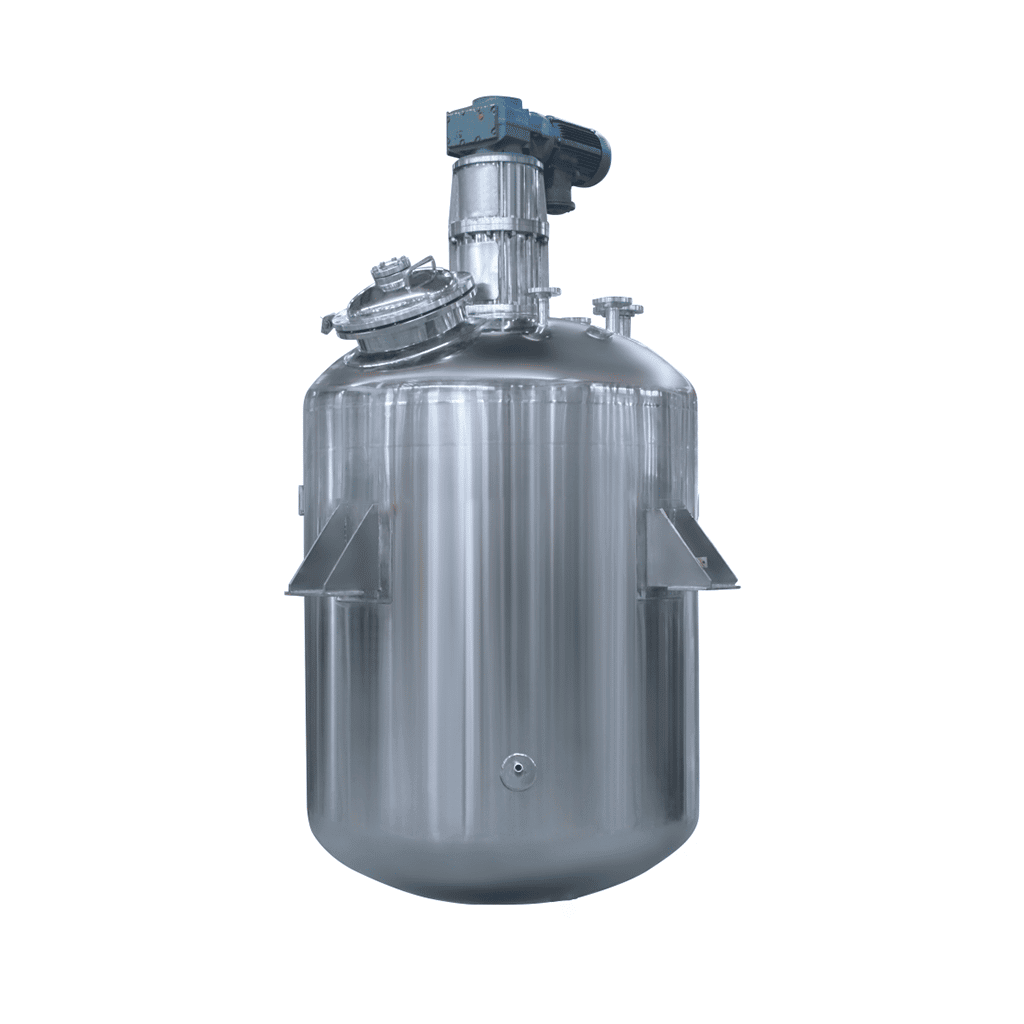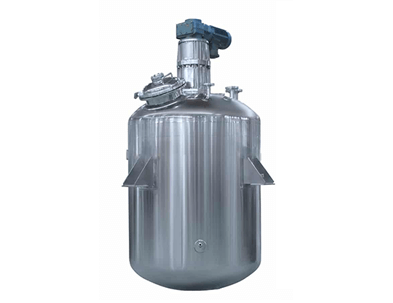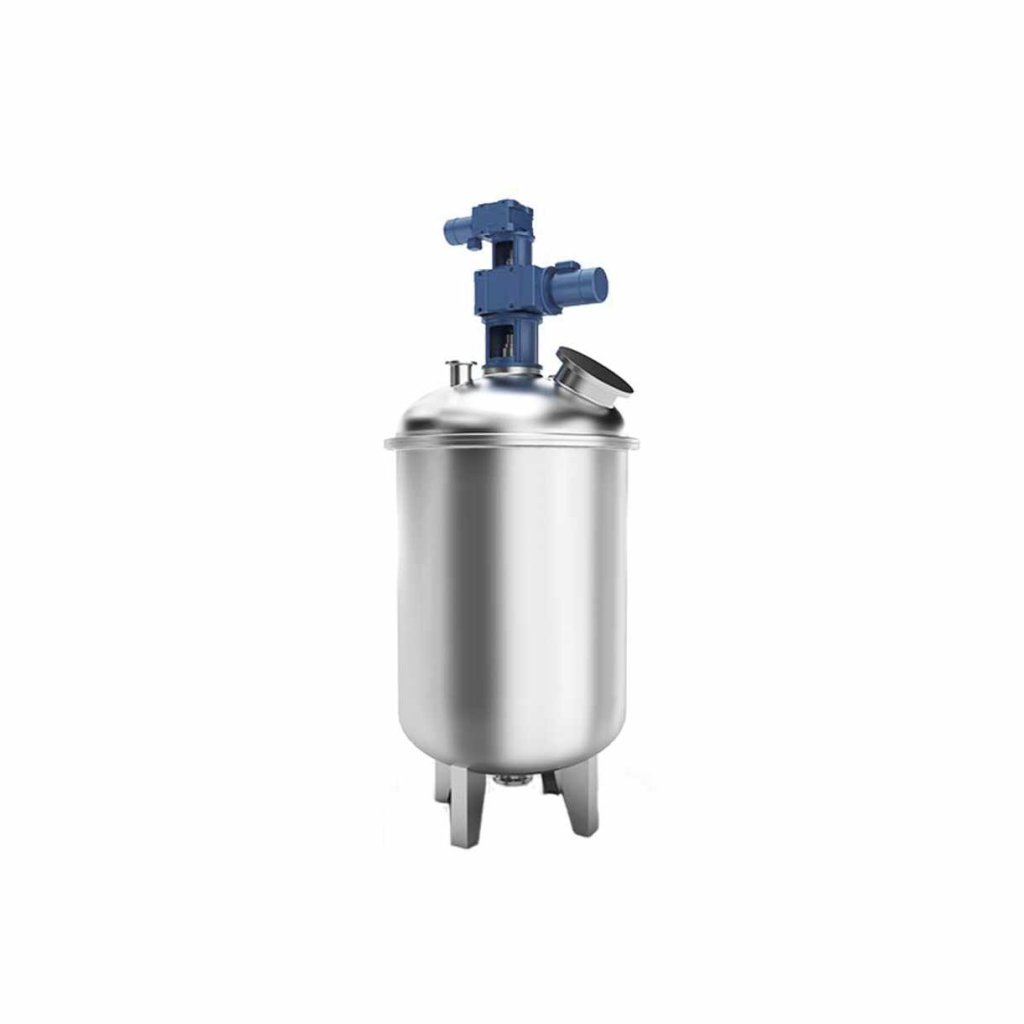
-24-1.jpg)
Stainless Steel Reactor
Stainless Steel Reactor: used in dairy products, sugar, beverages, and other fields
Material
stainless steel (316, 304)
Capacity (L)
10-10000+
Mixing system
anchor, paddle, frame and others
Heating system
electric heating, oil heating and others
A stainless steel reactor is a stainless steel container equipment. The stainless steel reactor consists of a kettle body, a kettle lid, a stirrer, a jacket, a bracket, a transmission device, a shaft seal device, etc. Materials and openings can be made according to user needs and process requirements. Stainless steel reactors are mainly used for stirring, homogenizing, and mixing storage of dairy products, sugar, beverages, food, and various pharmaceuticals.
Request a quoteWhen the stainless steel reactor is heated, there is a stirrer inside, and the mixed materials are stirred through the stirrer so that the materials can complete the reaction on the basis of full mixing. Some materials need to react at high temperatures, so they need to be heated and stirred at the same time, which requires the stainless steel reactor to have a heating function. Different stainless steel reactors have different heating methods. According to the heating elements, stainless steel reactors can be divided into two types: electric heating reactors and circulating heating reactors.

Electric heating of stainless steel reactor
The electric heating stainless steel reactor kettle has its own heating function and can generate heat to heat the materials in the kettle without the need for an external boiler. Electrically heated stainless steel reactors can be divided into two types, namely jacketed electric heating and zero-distance electric heating:
The jacketed electric heating stainless steel reactor kettle has two layers of kettle body, namely the inner cylinder and the outer cylinder. Several round holes are opened at the bottom of the outer cylinder, and flanges corresponding to the electric heating rods are welded on the outside. The electric heating rod is fixed on the outer cylinder through a flange connection, and the electric heating tube used for heating extends into the jacket between the inner cylinder and the outer cylinder. And inject enough thermal oil into the jacket to cover the electric heating tube. When the stainless steel reactor is working, power is first turned on to allow the electric heating tube to generate heat, increase the temperature of the heat-conducting oil inside the jacket, and then use the heat-conducting oil to increase the temperature of the inner cylinder. By increasing the temperature of the inner cylinder, the materials in the stainless steel reactor are heated and the temperature of the materials is increased.
The zero-distance electric heating stainless steel reactor has only one layer of kettle body, and the heating element is an electric heating plate. It is fixed on the outer wall of the stainless steel reactor through bolts, welding, etc., and the electric heating plate is wrapped with a layer of insulation. Let the heat generated by the electric heating plate directly heat the cylinder, and heat the materials in the stainless steel reactor kettle by raising the temperature of the cylinder.
The advantages of the jacketed electric-heated stainless steel reactor are simple structure and easy maintenance, but the heating temperature is low. The material temperature of the jacketed electric-heated stainless steel reactor does not exceed 280 degrees Celsius. The zero-distance electric heating stainless steel reactor is complex to maintain and the equipment manufacturing cost is high, but the material temperature can reach 400 degrees Celsius.

Circulation heating of stainless steel reactor
There are three types of circulating heated stainless steel reactors: jacketed circulation, outer coil circulation, and inner coil circulation. The circulating heating stainless steel reactor itself does not have the ability to generate heat. It requires an external boiler to transfer the heat generated by the boiler to the stainless steel reactor through heat transfer media such as thermal oil furnaces and steam.
The jacketed circulating heating stainless steel reactor has a flange port on the top and bottom of the outer cylinder, which is used to connect the pipelines of the thermal oil furnace or boiler. The high-temperature heat transfer medium heated in the thermal oil furnace enters the jacket from the flange port at the bottom of the outer cylinder along the pipeline, flows slowly in the jacket, and heats the inner cylinder. When the heat transfer medium flows to the flange port on the upper part of the outer cylinder, it flows out from the flange port and returns to the boiler for heating again. This cycle continues until the material in the stainless steel reactor reaches the required temperature.
The cylinder of the outer coil stainless steel reactor is a single layer. A certain number of semi-circular tubes are welded to the outer wall of the cylinder. The semi-circular tubes and the outer wall of the kettle form a complete circuit. The heat transfer medium circulates in this loop, bringing the heat generated by the boiler to the semicircular tube of the stainless steel reactor, and heating the materials in the stainless steel reactor through the cylinder. Since the semicircular tube is welded around the outer wall of the kettle, the heat exchange area is smaller than that of the jacket, and a large part of the heat will be released to the semicircular tube, causing heat waste.
The kettle body of the inner coil stainless steel reactor is also single-layered. The inner coil is formed by bending a complete seamless steel tube cylinder and is evenly fixed in the stainless steel reactor using angle steel and U-shaped bolts. The heat utilization rate of the inner coil is higher than that of the outer coil. All the heat released by the heat transfer medium through the tube wall is released into the material. However, the inner coil will hinder the flow of materials and is not easy to clean.
During the material processing and reaction process of the stainless steel reactor, the material reaction is mainly realized based on the temperature change inside the stainless steel reactor. If the temperature control of the stainless steel reactor is unbalanced, the reaction process and effect will be seriously affected. The jacket and coil of the stainless steel reactor can be used together. For example, in a crystallization reactor, if the material needs to be heated and then cooled down quickly, the jacket can be used in conjunction with the inner coil. Use a jacket to heat the materials in the stainless steel reactor, and use cooling water to cool down the inner coil.




